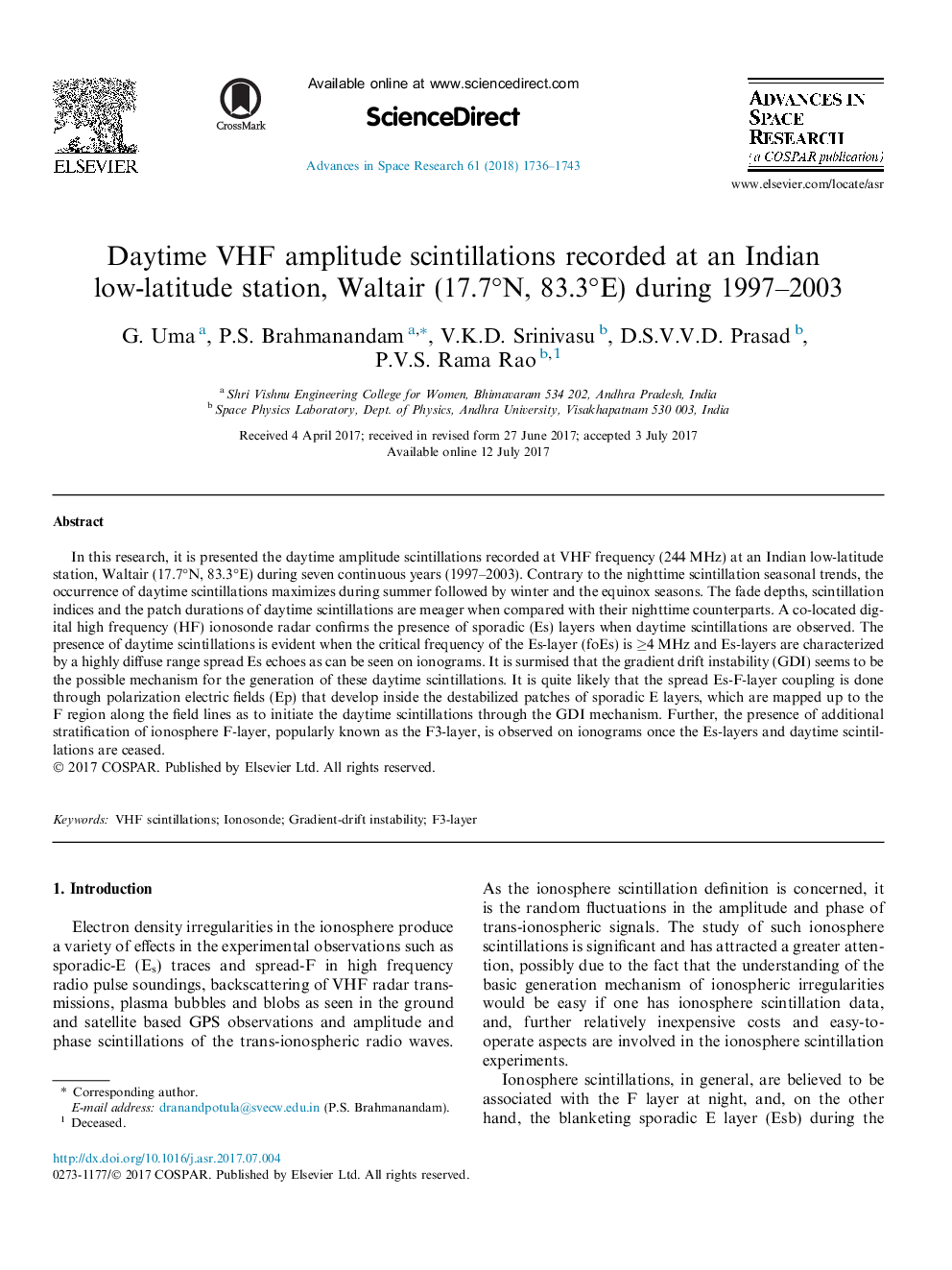| Article ID | Journal | Published Year | Pages | File Type |
|---|---|---|---|---|
| 8132106 | Advances in Space Research | 2018 | 8 Pages |
Abstract
In this research, it is presented the daytime amplitude scintillations recorded at VHF frequency (244 MHz) at an Indian low-latitude station, Waltair (17.7°N, 83.3°E) during seven continuous years (1997-2003). Contrary to the nighttime scintillation seasonal trends, the occurrence of daytime scintillations maximizes during summer followed by winter and the equinox seasons. The fade depths, scintillation indices and the patch durations of daytime scintillations are meager when compared with their nighttime counterparts. A co-located digital high frequency (HF) ionosonde radar confirms the presence of sporadic (Es) layers when daytime scintillations are observed. The presence of daytime scintillations is evident when the critical frequency of the Es-layer (foEs) is â¥4 MHz and Es-layers are characterized by a highly diffuse range spread Es echoes as can be seen on ionograms. It is surmised that the gradient drift instability (GDI) seems to be the possible mechanism for the generation of these daytime scintillations. It is quite likely that the spread Es-F-layer coupling is done through polarization electric fields (Ep) that develop inside the destabilized patches of sporadic E layers, which are mapped up to the F region along the field lines as to initiate the daytime scintillations through the GDI mechanism. Further, the presence of additional stratification of ionosphere F-layer, popularly known as the F3-layer, is observed on ionograms once the Es-layers and daytime scintillations are ceased.
Keywords
Related Topics
Physical Sciences and Engineering
Earth and Planetary Sciences
Space and Planetary Science
Authors
G. Uma, P.S. Brahmanandam, V.K.D. Srinivasu, D.S.V.V.D. Prasad, P.V.S. Rama Rao,
